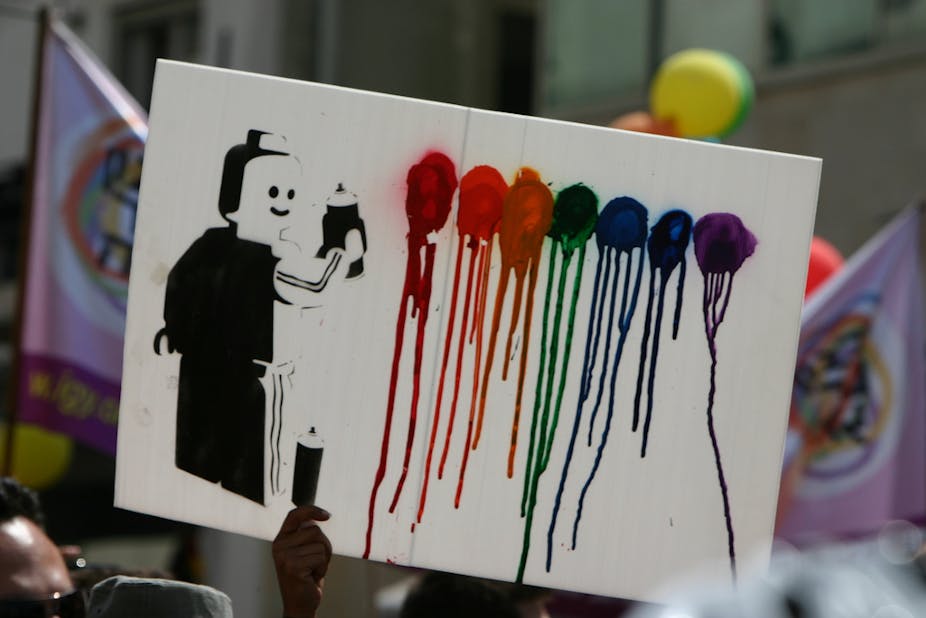Being gay, lesbian, bisexual, transgender or intersex is joyous! Make no mistake, it’s the experience of homophobia and transphobia that can destroy lives and often leads to depression, anxiety and poor mental health.
The evidence for this is as clear and conclusive as it gets. Discrimination can have a worse effect on your health and well-being than smoking, drinking, or what you eat.
For these reasons, it’s been really good to see three big public campaigns – No to Homophobia, beyondblue’s Left Hand campaign, and headspace’s Charlie v. The Big Secret poster – aimed at tackling discrimination based on gender identity or sexuality launched recently. But are they getting the messages right?
Unfortunately, when you engage with these campaigns, and watch the adverts, it’s easy to think that being gay means a life of misery. That if you’re young and gay, you should be prepared to be bullied and teased for the rest of your life.
In particular, the message in the beyondblue campaign seems to be that there are a few people who were born gay, and you should try to be nice to them because they can’t help it. It makes clear that homophobia is wrong, but it does nothing to affirm that being gay is good.
Those of us working to improve the health and well-being of same sex attracted and gender diverse young people know just how much difference getting the message right can make. Gay rights advocates have been working against a tide of homophobia for decades.
Different tactics have been deployed to fit particular contexts. For many years, the focus on homophobic violence, abuse, and suicide grabbed attention where there would otherwise have been silence. And there have been times when a focus on HIV/AIDS has been necessary to generate funding for broader advocacy work.
Today, at least at an institutional level, the homophobic tide appears to be turning. Thanks largely to the positive and vibrant campaign for equal marriage rights, homophobes in parliament have been forced onto the back foot – or, in the case of Corey Bernardi, to put his foot in his mouth. In health care, there’s a near complete consensus that sexuality is not a medical or psychological condition, and that providing therapy to “cure” gayness is highly damaging, particularly for young people.
According to the Writing Themselves In national survey of sexual health and well-being conducted at La Trobe University three times since 1998, levels of homophobia experienced by young people in Australia have actually been increasing. That’s the bad news. The good news is that the context young people experience that discrimination in, is positively changing.

Perhaps most importantly, the attitudes of young people in the third survey (2010) appear transformed when compared to the initial 1998 research. Instead of having to “suck up” the abuse because “I deserve it”, young people are increasingly calling for “something to be done” and recognising that “it’s their problem, not mine”.
Young people who know they are not straight can now access more information to safely explore their sexuality than ever before. Programs such as Safe Schools Coalition Victoria mean that there are now also more positive discussions about sexuality in schools than previously.
So, is it time we moved on from some of the old arguments in public campaigns? We may be born this way, but does it really matter? Just because we’re gay doesn’t mean we’re bound to a life of suffering. We’re not victims; we’re a community as diverse as any other.
Two of the key determinants of good mental health are civic engagement and positive relationships. Any educator will tell you that young people can only thrive and reach their potential when they feel good about themselves. This includes feeling good about your sexuality, whatever that might be.
When we’re thinking about challenging homophobia, let’s think about how our messages might be received by young people who are thinking about their sexuality for the first time. All of us have a responsibility for creating a safer, more inclusive community – but let’s make it a happier one too.

